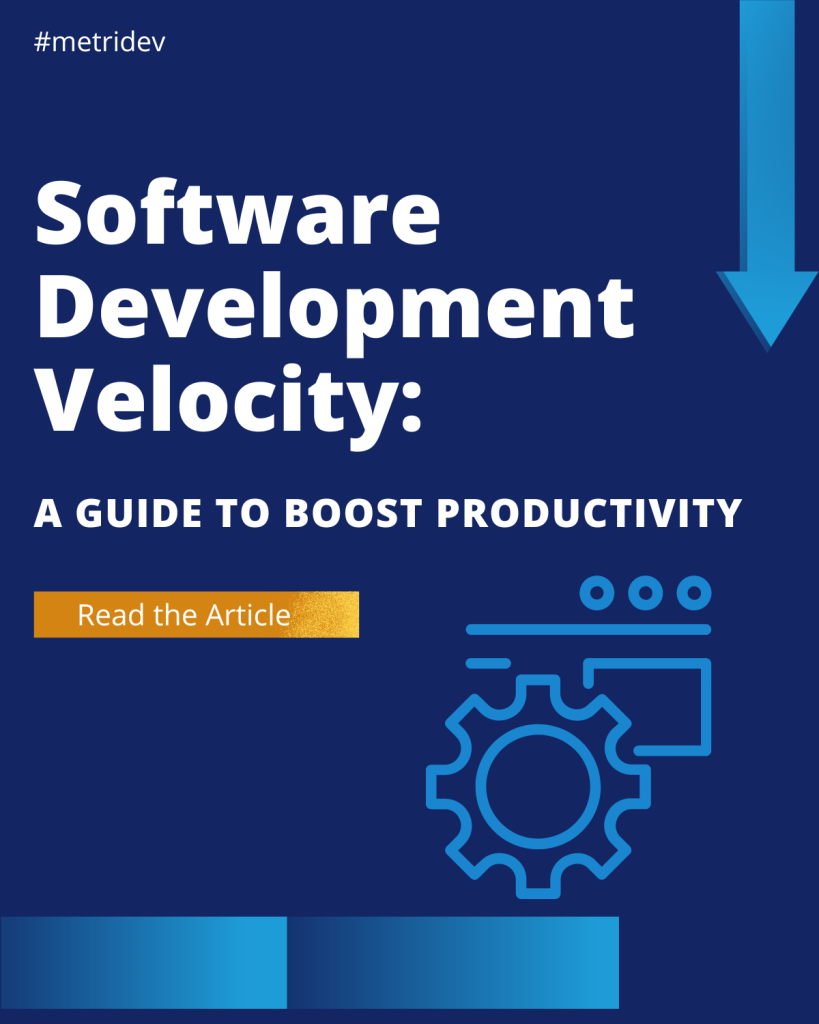Introduction
In today’s rapidly evolving business landscape, organizations are constantly seeking ways to improve their software development and delivery processes. One approach that has gained significant traction is DevOps, a methodology that emphasizes collaboration and integration between development and operations teams. DevOps enables organizations to deliver high-quality software at a faster pace, enhancing their ability to respond to market demands and stay ahead of the competition.
Understanding the Importance of DevOps in Business Transformation
DevOps is not just a buzzword; it is a critical component of successful business transformation. By aligning development and operations teams, organizations can break down silos, foster collaboration, and improve overall efficiency. DevOps enables continuous delivery, allowing companies to release software updates and new features more frequently, ensuring that their products remain competitive in the market. Moreover, the increased collaboration between teams leads to better communication, reduced errors, and enhanced productivity.
What is DevOps Maturity Model?
To effectively implement DevOps practices and reap the associated benefits, organizations need to assess their current state and define a roadmap for improvement. This is where the DevOps Maturity Model comes into play. The DevOps Maturity Model provides a framework for organizations to evaluate their DevOps capabilities and chart a path towards maturity. It allows companies to identify their strengths and weaknesses, set realistic goals, and measure progress over time.
How Maturity is Measured in DevOps?
Maturity in DevOps is measured by evaluating an organization’s proficiency in key areas such as culture, automation, measurement, and sharing (CAMS). These four pillars serve as the foundation for a successful DevOps implementation. Assessing maturity involves analyzing the organization’s practices, processes, and tools across these domains to identify areas for improvement. By measuring maturity, organizations can gain insights into their current state, prioritize initiatives, and allocate resources effectively.
The Stages of the DevOps Maturity Cycle
The DevOps Maturity Model encompasses five distinct stages, each signifying a specific level of maturity within an organization’s DevOps journey. Progressing through these stages, organizations evolve from a rudimentary ad hoc approach to a fully optimized DevOps environment. Initially, in the Ad Hoc stage, organizations operate with minimal or no DevOps practices, leading to disjointed development and operations teams, resulting in sluggish software delivery, limited collaboration, and frequent errors. As organizations move to the Awareness stage, they begin to recognize the advantages of DevOps and delve into its principles, potentially implementing basic DevOps practices, although the adoption is not uniform or widespread.
Transitioning to the Defined stage, organizations establish standardized DevOps practices and processes, gaining a comprehensive understanding of how DevOps can benefit their business and initiating its implementation across teams. Subsequently, in the Managed stage, organizations attain a high level of DevOps maturity, incorporating well-defined processes, automation, and metrics, facilitating efficient software delivery and continuous improvement. Lastly, in the Optimized stage, organizations wholeheartedly embrace DevOps principles and practices, perpetually striving for enhancement, innovating, and leveraging advanced technologies to drive business success.

What are the Components in DevOps Maturity Model?
The DevOps Maturity Model comprises several components that organizations should consider to assess their maturity level accurately. These components include:
1. Culture: A culture of collaboration, trust, and continuous learning is essential for DevOps success. Organizations must evaluate their cultural alignment with DevOps principles and identify areas for improvement.
2. Automation: Automation plays a crucial role in DevOps, enabling organizations to streamline processes, reduce errors, and accelerate delivery. Evaluating the level of automation in development, testing, deployment, and operations is vital to determine maturity.
3. Measurement: Measurement allows organizations to track progress, identify bottlenecks, and make data-driven decisions. Assessing the availability and effectiveness of metrics and KPIs is key to understanding maturity.
4. Sharing: Effective communication and knowledge sharing are fundamental to DevOps. Organizations should evaluate their collaboration tools, information flow, and the extent of cross-functional sharing to assess maturity accurately.
Assessing Your Organization’s DevOps Maturity
To evaluate your organization’s DevOps maturity, several steps can be taken to gain a comprehensive understanding and identify areas for improvement. Firstly, commence with a thorough self-assessment using the components of the DevOps Maturity Model, evaluating your organization’s practices, processes, and tools across culture, automation, measurement, and sharing. Following this, compare your self-assessment results against industry best practices and benchmarks to gain insights into the gaps and areas for improvement. It is crucial the collaboration. Involve stakeholders from development, operations, and other relevant teams to gather different perspectives and ensure a comprehensive assessment. Additionally, considering engaging external consultants or experts to conduct an independent assessment can provide an unbiased perspective, shedding light on blind spots and offering valuable recommendations for your organization’s DevOps journey.
Benefits of Implementing the DevOps Maturity Model
Implementing the DevOps Maturity Model yields numerous benefits for organizations, facilitating their journey towards improved DevOps capabilities. Firstly, the model provides a clear roadmap, enabling organizations to prioritize initiatives, establish achievable goals, and measure progress over time. Moreover, by enhancing collaboration, automation, and measurement, organizations can streamline their software delivery processes, leading to increased efficiency and faster time-to-market. Additionally, DevOps practices promote continuous testing, monitoring, and feedback, resulting in higher-quality software and improved reliability. Furthermore, through increased automation and standardized processes, organizations can effectively reduce the risk of errors, outages, and security vulnerabilities. Notably, DevOps also fosters a culture of collaboration, trust, and continuous improvement, driving a cultural transformation within the organization and enhancing employee engagement and satisfaction.
What are the 5 Levels of Maturity Modeling?
The DevOps Maturity Model defines five levels of maturity:
- Level 1: Ad Hoc: In this stage, organizations have limited or no DevOps practices in place.
- Level 2: Awareness: Organizations recognize the value of DevOps but have not fully embraced it. They may have implemented some basic practices.
- Level 3: Defined: Organizations have established standardized DevOps practices and processes across teams.
- Level 4: Managed: At this stage, organizations have achieved a high level of maturity. They have well-defined processes, automation, and metrics in place.
- Level 5: Optimized: Organizations at this level have fully embraced DevOps principles and continuously strive for improvement.
Challenges in Achieving DevOps Maturity
While the DevOps Maturity Model provides a roadmap for organizations, achieving maturity is not without challenges. One common challenge involves cultural resistance, as transforming the culture and mindset within an organization can be arduous, with resistance to change, lack of collaboration, and siloed thinking hindering progress. Additionally, organizations with legacy systems and processes may encounter difficulties in adopting DevOps practices, as modernizing and integrating these systems can be complex and time-consuming. Furthermore, a significant challenge lies in the skills gap, as organizations may lack the necessary expertise to effectively implement DevOps practices, necessitating upskilling and training to bridge this gap. Moreover, selecting the right tools and technologies to support DevOps practices can be overwhelming, requiring organizations to evaluate their requirements and choose tools that align with their goals.
What is the Maturity Cycle of DevOps?
The maturity cycle of DevOps represents the journey from the initial stage to the highest level of maturity. It involves continuous improvement and refinement of DevOps practices over time. Transitioning from one stage to another requires careful planning and execution. Initially, organizations embark on an Assessment phase where they evaluate their current state and identify areas for improvement. Subsequently, in the Planning stage, based on the assessment findings, organizations craft a roadmap and set achievable goals for attaining higher maturity levels. This leads to the Implementation phase, where defined practices, processes, and tools are put into action to enhance DevOps capabilities.
As the process unfolds, Monitoring becomes crucial, wherein organizations continuously track progress by measuring key metrics and performance indicators. Regular Evaluations follow suit, allowing organizations to assess the effectiveness of implemented practices and pinpoint areas for further enhancement. Finally, Iterative Improvement becomes the norm, as organizations cyclically revisit the previous stages, refining their DevOps practices and steadily advancing towards higher maturity levels. Through this cyclical process, organizations foster a culture of continuous improvement and innovation within their DevOps ecosystem.
Best Practices
To ensure a successful DevOps transformation, organizations should consider the following best practices. Firstly, Executive Support is crucial. Obtaining backing from senior leadership provides the necessary impetus to drive the cultural and organizational changes required for DevOps adoption. Secondly, fostering Collaboration and Communication is paramount. Encouraging cross-functional collaboration and knowledge sharing fosters a culture of innovation and efficiency. Thirdly, investing in Automation and Tooling streamlines processes. Automation tools facilitate seamless integration, testing, deployment, and monitoring of software, enhancing overall efficiency. Fourthly, embracing Continuous Improvement is essential. Encouraging a culture of continuous learning and experimentation fosters innovation and agility.
Moreover, integrating Security and Compliance practices into the DevOps lifecycle ensures the integrity and safety of software products. Implementing security testing, code analysis, and compliance checks as part of the development process mitigates risks effectively. Finally, defining Measurement and Metrics enables organizations to track progress and evaluate the effectiveness of DevOps practices systematically. By adhering to these best practices, organizations can navigate their DevOps journey with confidence and achieve sustainable success.
Some Tools and Technologies
Several tools and technologies can support organizations in their DevOps journey. Transitioning smoothly from one phase to another often relies on the effective utilization of these tools. Firstly, CI/CD Tools automate the build, test, and deployment processes, ensuring faster and more reliable software delivery. Secondly, Configuration Management Tools play a crucial role in managing and automating infrastructure, ensuring consistency and repeatability across environments.
Additionally, Monitoring and Alerting Tools offer real-time visibility into software performance, empowering organizations to detect and resolve issues proactively. Furthermore, Collaboration Tools foster effective communication and knowledge sharing between teams, thereby enhancing collaboration and productivity throughout the development lifecycle. Lastly, Cloud Platforms offer scalability, flexibility, and cost-efficiency for DevOps practices. Leveraging infrastructure-as-code and automating resource provisioning, they provide the foundation for agile and efficient software development and deployment. By integrating these tools seamlessly into their workflows, organizations can streamline their DevOps processes and accelerate their journey towards higher efficiency and innovation.
Conclusion
Implementing the DevOps Maturity Model is crucial for organizations seeking to transform their business processes and stay competitive in today’s fast paced market. By assessing their maturity level, organizations can identify areas for improvement, set realistic goals, and measure progress over time. The DevOps Maturity Model provides a roadmap for organizations to enhance collaboration, automate processes, measure performance, and foster a culture of continuous improvement. By following best practices and leveraging the right tools and technologies, organizations can successfully navigate the DevOps maturity cycle and achieve seamless business transformation.
Start your DevOps transformation journey today and leverage the power of the DevOps Maturity Model to drive seamless business transformation. Read our article DevOps Research and Assessment: Unlocking the Path to Success.









Leave a Reply